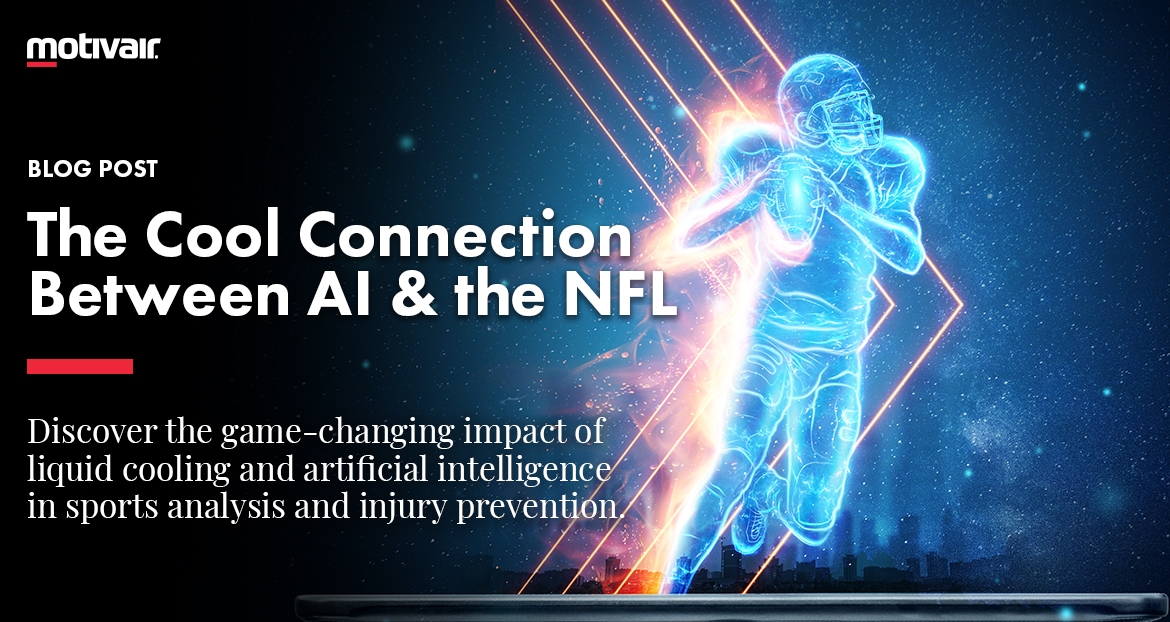Motivair Cool News
February 6th, 2024
The Cool Connection Between AI & the NFL

The era of meticulously scrutinizing extensive hours of game footage for insights to enhance football players' speed, efficiency, and resilience for the next game may be approaching its conclusion.
As artificial intelligence continues transforming the approach to various tasks, it is creating fresh possibilities to enhance the health, safety, and efficiency of sports, including the NFL.
Building a Better Athlete
In partnership with AWS and the NFL, The Digital Athlete utilizes AI and machine learning (ML) to construct a comprehensive understanding of players' experiences. This enables NFL teams to understand what a player needs to stay healthy, recover quickly, and perform better.
According to the NFL, the Digital Athlete gathers data from a range of sources, including game day data from the Next Generation Stats System (NGS), which uses AWS to “capture real-time location, speed, and acceleration data for every player, on every play, on every inch of the field.”
AI- and ML-backed algorithms use these inputs to run millions of simulations of games and distinct in-game scenarios to inform teams which players are at the highest risk. These insights form personalized injury prevention, training, and recovery programs.
“Using everything it knows so far, the Digital Athlete uses sets of player, weather, equipment, and stadium data to run infinite simulations of any play, reconstructing the conditions of how and when an injury occurred, with no risk to the athletes themselves,” the NFL said.
Simplifying a Painstaking Task
Students at Brigham Young University are employing AI to automate the labor-intensive task of manually analyzing and annotating game footage.
Through the application of deep learning and computer vision, the researchers have developed an algorithm capable of consistently identifying and labeling players in game footage and determining the offensive team's formation – a process typically requiring numerous video assistants.
Although still in the early stages of research, the team has already achieved a player detection and labeling accuracy exceeding 90% with their algorithm, along with an 85% accuracy rate in determining formations. They envision this technology could ultimately eliminate the need for manually annotating and analyzing recorded video, currently utilized by NFL and college teams.
Liquid Cooling for the AI Era
The success of these AI-driven initiatives is intricately connected to the capabilities of data centers and their effectiveness in cooling sophisticated processors.
Efficient cooling, like single-phase direct liquid cooling, plays a crucial role in maintaining the optimal functioning of data centers, particularly when tackling advanced AI processors.
As AI computations become increasingly intricate and processors generate more heat, implementing innovative cooling solutions is essential to sustaining the continued progress of these new technologies.